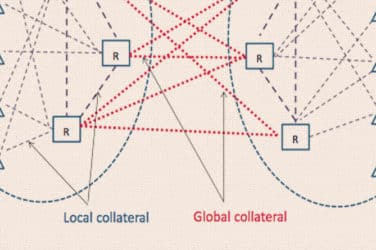
Initial margin requirements are expected to increase by more than $1 trillion by 2018 leading to a need to unlock dormant collateral held by institutional investors.
A joint report, “The Capital Markets Industry: The Times They Are A-Changin’ “, from consultants Oliver Wyman and Swift, the payment and messaging firm, said new regulations will cause significant growth in centrally cleared volumes and make collateral management more important.
“To meet this growing demand for collateral, solutions will be required to unlock dormant eligible instruments held by institutional investors,” added the report.
The study said the buy-side has an opportunity to decrease risks through increased use of central clearers and collateral management although there will be more operational complexities.
“Such issues are prompting the buy-side to explore solutions such as segregated accounts,” said the report. “However, a more proactive stance on understanding credit exposure to both clearing brokers and CCPs will be required, and the implications of an operational failure by one of those parties.”
The buy-side will also need to change their risk management procedures as agency models become more common and they have more exposures to each other rather than to sellside banks.
“Heterogeneity of risk management amongst the buy-side will also become an increasing concern as providers devolve risk to them,” added the report. “Risk management platforms are typically white-labelled solutions and therefore susceptible to similar risks across participants, which will need to change.”
The buy-side is also a major source of dormant collateral which the report said can be released using the enhanced custody model. For example, hedge funds could become market makers and more buy-side firms could take on more principal risk.
The report said: “Due to regulatory changes and the desire of the sell-side to reduce risk, certain risk management requirements will be foisted onto the buy-side. Although this places a new burden on these firms, it presents an opportunity for those who are best able to deal with the change.”
In addition the study said demand for tri-party repo will increase due to the withdrawal of bilateral repo capacity as new rules such as the leverage ratio and the Basel III Net Stable Funding Ratio threatens participants’ ability to access cash for margin.
This week Newedge, the multi-asset broker and clearer, said it is aiming to expand its Agency Cash Management platform for the tri-party repo market to the US after achieving record volumes of €5bn over the past month.
The report said the greatest challenge will be ensuring operational robustness as volumes of circulating collateral increase, prompting a greater focus on standards.
Daniela Peterhoff, partner at Oliver Wyman, said in the report: “Execution is becoming commoditized, leading to a shift in services across providers. Core settlement and custody are moving closer to a utility model, while in parallel, value-added post trade and related services are growing, particularly collateral management.”


